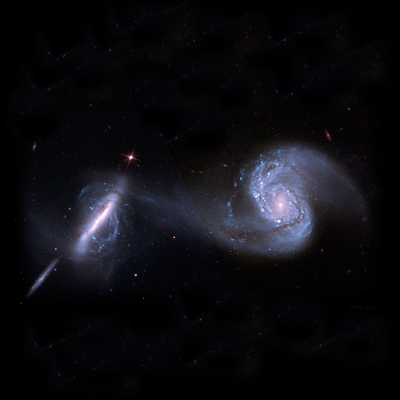|
A large (hundreds to thousands of galaxies) and representative survey of spatially-resolved galaxies selected homogeneously over the redshift range z=2-4 is an important scientific goal for the ELT. This will probe the mass assembly of galaxies by disentangling the different physical processes at work as a function of time and mass (Puech et al. 2010; 2018). When combined with deep imaging in the rest-frame near-IR from, e.g., the JWST, the evolution of their dynamical state as a function of time and mass can be investigated. Amongst the whole mass spectrum, low mass galaxies represent a unique niche for the large integrated area of the ELT as we detail below. | ||
Dwarf galaxies are expected to play a key role in galaxy formation and evolution. In hierarchical models they are thought to be the first structures to form in the Universe and are believed to have an important contribution to the reionisation process. Investigating the detailed properties of dwarf galaxies around the peak of cosmic star formation history (z ~ 2) is therefore an important test of structure formation in ΛCDM. Spatially resolved studies of the star formation activity and the metal enrichment provide powerful diagnostic tools: metallicity gradients are thought to be highly sensitive to the gas surface density, its kinematic structure (coherent rotation vs unordered motions), and the prevalence of inflows and outflows. Distant sub-M* galaxies have faint apparent magnitudes and we still have limited knowledge of their morphological and chemodynamical properties (e.g., Kassin et al. 2012; van der Wel et al. 2014; Kartaltepe et al. 2015; Whitaker et al. 2015; Simons et al. 2015). The samples for which spatially-resolved kinematics can be obtained remain small and the integration times very large (e.g., Contini et al. 2016).
Simulations show that mapping the properties of the ionised haloes of starbursting dwarfs similar to Haro11 at z ~ 2 should be feasible in ~10hr with multi-IFU observations. Typical logM* = 9 galaxies at z = 2 have internal velocity dispersions ???? < 50 km/s (Mason et al. 2016), which MOSAIC will be able to resolve but JWST/NIRSpec will struggle with. In addition to enabling the measurement of (spatially-resolved) internal motions, resolving emission lines down to ???? ~ 10 km/s will be critical to unveiling the presence of the narrow kinematical subcomponents that are characteristic of rapidly assembling dwarfs (Amorin et al. 2012)--and which indicate that star formation typically proceeds in an ensemble of several compact and turbulent clumps.

